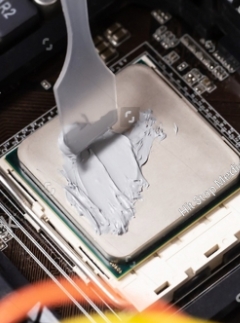Thermal conductive gel is a high-performance material designed to enhance heat dissipation in electronic devices. It provides an efficient thermal interface between heat-generating components, such as CPUs and GPUs, and cooling mechanisms like heat sinks or cooling plates. Known for its flexibility and superior heat transfer properties, thermal gel is widely used in consumer electronics, industrial equipment, and automotive applications.
How Thermal Conductive Gel Works
This gel fills microscopic air gaps between surfaces, ensuring optimal thermal contact. It is soft and malleable, allowing it to conform to uneven surfaces. Unlike traditional thermal pads, the gel provides a tighter bond, reducing thermal resistance. Devices that require consistent heat management benefit significantly from its application.
Advantages of Thermal Conductive Gel
One major advantage of thermal gel is its adaptability. It maintains performance under high temperatures and retains its consistency over time. Additionally, it minimizes mechanical stress on sensitive components, which is crucial in devices prone to vibration or movement. Another benefit is its easy application. Many formulations are dispensed directly onto components using automated systems or syringes, making it ideal for high-volume production.
Applications
Thermal conductive gel is widely used in smartphones, laptops, and gaming consoles. As devices become thinner and more powerful, efficient heat management has become a necessity. Automotive electronics, including battery management systems and inverters, also rely on thermal gels for reliable performance. Industrial applications, such as LED lighting and power modules, use this material to prevent overheating and extend equipment lifespan.
Market Trends and Innovations
The growing demand for “high-performance thermal interface materials” reflects the importance of heat management in modern technology. Innovations in thermal gels focus on enhancing thermal conductivity while maintaining low viscosity for better application. Another popular search, “best thermal gel for CPUs”, highlights its role in optimizing PC performance. Eco-friendly formulations are also emerging as companies seek “sustainable heat dissipation materials” to meet environmental regulations.

